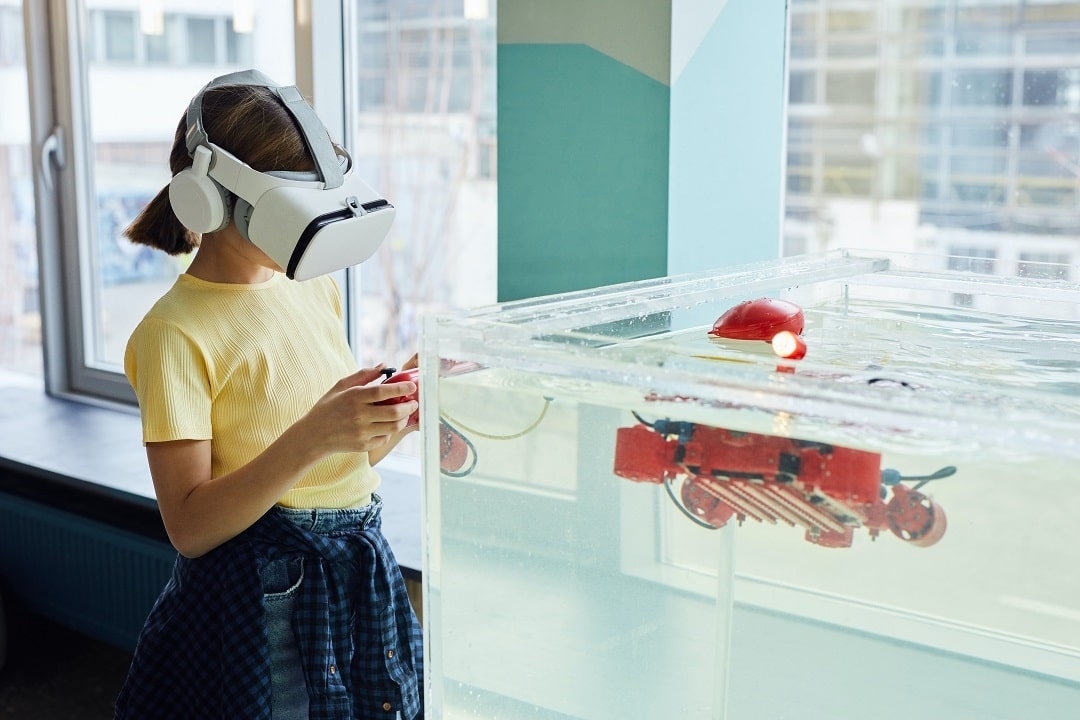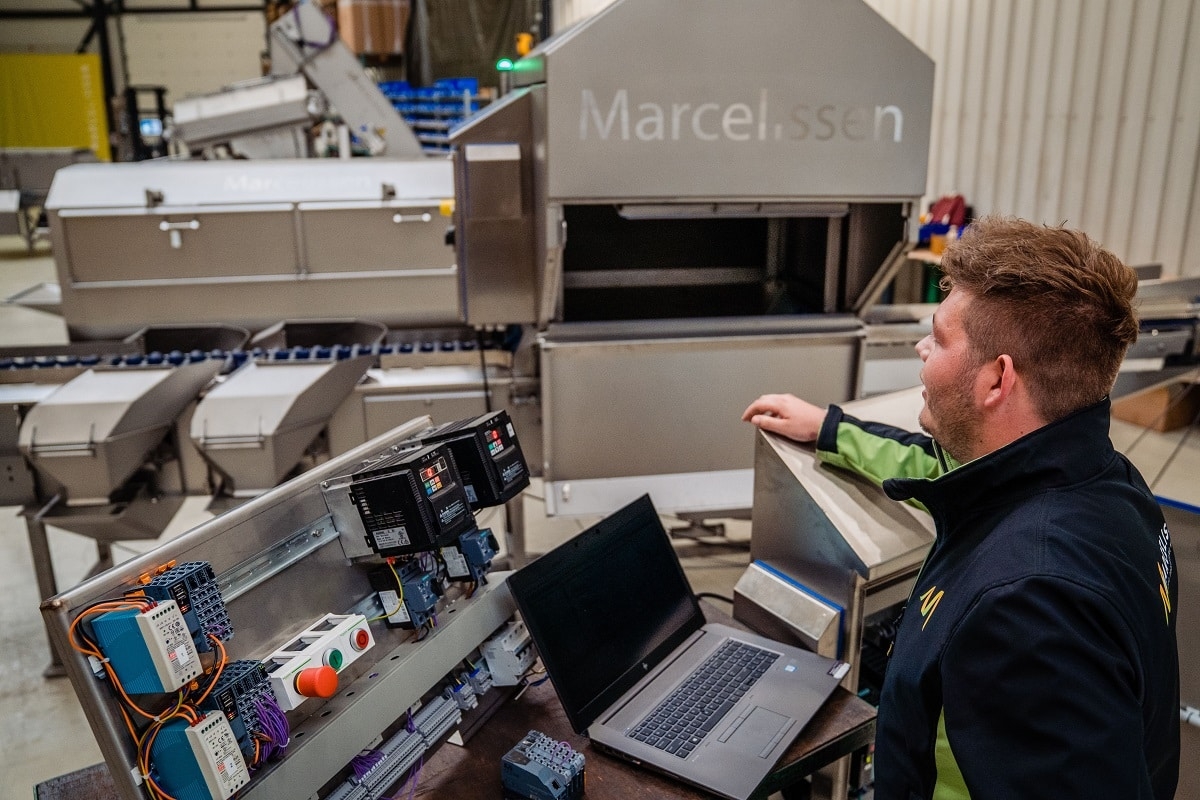
The importance of innovation
Innovation, innovative and innovate; If you open a business page, you are very likely to come across one of these terms. But what do these terms really mean? The literal meaning of innovation is ‘renewal’. Therefore, innovation is often associated with inventions. However, innovation is much broader and thus not limited to new inventions. For example, you already foster innovation by simply improving a product or process. Hence, many different forms of innovation exist. Comprising product, process, market and technological innovation to name a few.
Especially now that we are fully engaged in Industry 4.0, and according to some even 5.0, the importance and urge to constantly innovate quickens. Want to know more about it and our approach at Marcelissen? Learn all about it in this article!
Why innovation?
One of the most fundamental reasons for innovation is to create a competitive advantage over contestants. In the ever-changing business environment, no innovation equals stagnancy which causes turnover to drop and eventually leads to bankruptcy. Well-known examples are Blackberry and Kodak. More than a decade ago, the Blackberry phone was unmissable while at the time of writing the number of users is zero. In fact, at the beginning of this year, Blackberry’s entire phone branch was shut down. In the case of Kodak, the company waited too long to utilize innovations (of their own devising) with the result of the company going under.
Innovation may also help to differentiate yourself from your direct competitors. It is very important to offer your (potential) customers distinguished value they can only obtain at your company. How else do you think Apple has managed to keep a lot of people walking around with the latest iPhones for years. Another important reason for applying innovation is to increase productivity. For example, by innovating or improving the production process, productivity can be increased. This is important for an organization to remain in business in a sustainable way in the long term.
‘’One of the most important, generally applicable reasons for innovation within the business environment is to maintain or create the right to exist in a constantly changing world.’’
Innovation around us
People have been innovating for as long as they exist. An example of this is the first launch of the iPhone. (Check out the release here, a must see!)
We got so used to some innovations that we don’t even notice them in everyday life anymore, but can’t live without them. Take a car; in theory you can live without it, but your life is going to look a lot different when you no longer have one. Yet another example is your smartphone. In fact, we don’t know anyone who doesn’t have their smartphone in their pocket by default. There are plenty of people who will turn around on the road when they find out they forgot their phone. Some even feel a bit naked when they no longer feel their phone in their pocket. Some other examples in recent years are; social media, cloud storage, Air BnB, Uber, 3D printers, drones etc.
As a machine builder, we also need to ensure that all new machines being developed are running more and more efficiently. That means smart machines that consume far less raw materials and energy, which is better for the environment. With this, we can take another step toward a fully circular economy. Another additional benefit of applied innovation to machines is that they require less maintenance resulting in lower downtime. Also, a smart machine can take proactive measures or trigger an alarm to prevent downtime and/or malfunctions. All this by continuing to innovate.
Innovation in the future
Innovations are hard to predict, especially in the digital sector. However, you can try to estimate what kind of things might be possible in the future. For example, consider 3D printing, which is already being used for various products, but what else could we print with it?
The utilization of VR and Augmented Reality also appears to increase rapidly. It is predicted that it will also be used more and more in the education and entertainment sectors. For example, think about watching sports games and feature films in a VR environment or attending educational workshops virtually.
Since last year we also have our own VR environment at Marcelissen to display our machines. Currently you can view our Optical Sorter at full scale. Moreover, you can walk around and even inside the machine in our VR environment. Interested in taking a look? Contact us!
“Innovations are hard to predict, especially within the digital sector.’’
Another development that could become very big in the future is autonomous transportation. An entirely self-driving car is no chasing rainbows any long and might become reality soon. While technology seems to be mature enough, regulations appear to be the bigger problems at the moment. Another innovation that is highly anticipated is the Internet of Things, fostering the rise of Smart Industries. Accordingly, smart devices collect and share data in order to work together. For example, consider a smart thermostat. This is a device that, thanks in part to the Internet of Things, can ensure that it is exactly the right temperature in every room in your home. Based on data exchanges, such a thermostat can set the temperature. Data that can be used for this are weather forecasts and personal preferences.
The Internet of Things can also simplify your life in the workplace quite a bit. For example, Intel is currently working on the world’s smartest office building. In this office, for example, sensors will be installed that are connected to the Internet. This ensures, partly thanks to facial recognition, that the doors open automatically. The lighting and climate in the rooms will also be regulated automatically. Do you ever mess around with cables or USB sticks? No problem for this building. The right presentations and relevant files are downloaded automatically.
It’s hard to predict what innovations will actually succeed in the future, though. For example, what use is a self-driving car if no one wants to get into it? It could just be that one or more of the above innovations will not succeed. How do we actually innovate at Marcelissen? Read on!
Innovation at Marcelissen
Another point that increases the importance of innovation at Marcelissen is that within our industry we deal with natural products that are subject to weather conditions. Accordingly, we work a lot on how to make the best use of these products and how to overcome the customers’ problems and challenges. The innovations are always carefully tested in advance in cooperation with the client to assure only optimal solutions are created.
There is no problem that we avoid. The reason is: “we have never failed to solve a problem”. For example, we developed the Sliver Remover 50 years ago, because at that time the market was looking for a machine that would sort out the pieces that were too thin after cutting in the production of fresh fries. In addition, we have developed an optical sorter that is different and more innovative than other optical sorters in the market. For example, it can not only sort by size and color of spots, but also by shape and size of the whole potato and root. Also, due to our innovative design, a wrong product can never reach the good product stream. This is because our machine ejects both the bad and the good products separately instead of in one big product flow where only the bad product is removed from the total product flow.
‘’There is no problem or issue that we shy away from. We are proud to say that we have never failed to solve a problem.’’
Other areas we utilized a lot of innovation recently are Motor Control Cabinets, Remote Machines and IT Cabinets for our machines. The biggest step we made with control cabinets is to produce them ourselves and to standardize the components. We also made some decent improvements to the complete lines lately. One of our graduates has developed an object-oriented software structure for complete lines. This standardizes the functionality of the machines.
In addition, the technology of the machines is constantly being improved. This ensures that less damage is caused, and the capacity of our machines increases. Moreover, the margin of errors during production fades. This was mainly the technical side in our company, but the technical side is not the only place where you can innovate as a company…
On the HR front, innovations can also be made. An example of this is the design of reward systems and the personnel database. For example, we have set up our reward system in such a way that every employee has a clear picture of where they can grow from the moment they start with us, not only in terms of reward but also in terms of responsibilities and functions. By being transparent about this and linking this growth to measurable KPIs, clarity is established benefitting the overall working atmosphere. Everyone wants perspective and clarity, right?
In terms of the workforce, recruitment and selection is of great importance, especially in this tight labor market. The time of exclusively choosing candidates based on qualifications and background is, in our opinion, over. At least as important to us is the match between candidate and our company based on our core values and vision. In short, we find it important that the person behind the resume matches our company culture.
Generally, you see this kind of systems, in our opinion wrongly, mainly in large companies while we believe that this can also work very well for SMEs. Steering by data is useful for any organization, large or small.
Measuring = Knowledge
Measuring is knowing and we do this by means of Power BI. This is an interactive program where data from various systems can be displayed very visually and in real time, allowing you to see how your business is doing at any given time. Examples of this are analyses concerning the turnover, the costs and the cost price of a machine.
To ensure that this data is properly analyzed and used, we have established our own continuous improvement department. This department focuses on the continuous improvement of processes in order to work smarter, more efficiently and more effectively, because: “If you do what you always did, you will get what you always got, and we don’t want that!” says Jos Derijk, our Managing Director.
How do you innovate at your job/company? Let us know!
‘’If you always do what you did, you will always get what you got. That’s why innovation is so important!’’
Tips for innovating
Now that you’ve read the blog on innovation, we’d like to give you a few more tips/handles. Or maybe you just came for the tips. Either way, we’re going to make sure you can get to work with these tips to continue innovating. The tips we want to give you are:
– Keep an eye on the market! In order to create the right innovations, it is important to know what trends are currently happening. Immerse yourself in these trends and/or technologies. It would be a shame if you develop a cool product, but the market is not waiting for it. But also, the other way around, when the market is screaming for a product, but you don’t notice this. Don’t miss out on those opportunities!
– Map out what problems and/or opportunities are happening for you and your customers in terms of innovation/improvement. Based on these problems and/or opportunities (innovative) services and products can be developed that seamlessly connect to them.
– Be patient! After all, it may take some time for your updated/improved product, service or process to catch on. The Mobile phone was first seen as useless. But do you know anyone today who does not use a mobile phone on a daily basis?
– Above all, seek collaboration. To be able to innovate successfully as a company you often need other partners. Maybe they just have certain knowledge that your organization lacks. We often call this co-creation, because together we are always stronger!
– Make sure innovation is a continuous process within your company. Don’t just start innovating when profits level off. By then, it can sometimes be too late. Stay proactive and even when the orders are pouring in, keep actively looking ahead. Tomorrow is not always a given.
– Don’t shy away from new challenges. Occasionally it can be good to step out of your comfort zone. New situations require new skills. For example, creativity is developed when things are done differently than they were before.
Of course, we also continue to improve and innovate ourselves continuously. Partly because that’s in our DNA and partly because Industry 4.0 pushes us to go along with it.
This is also a big challenge for us, so we are always open to tips & tricks in this area. So, do you have any tips, tricks and facts about applying innovation that we haven’t mentioned yet? Feel free to send us a message! We like to learn from each other and grow together. Or in other words, see tip 4😊



